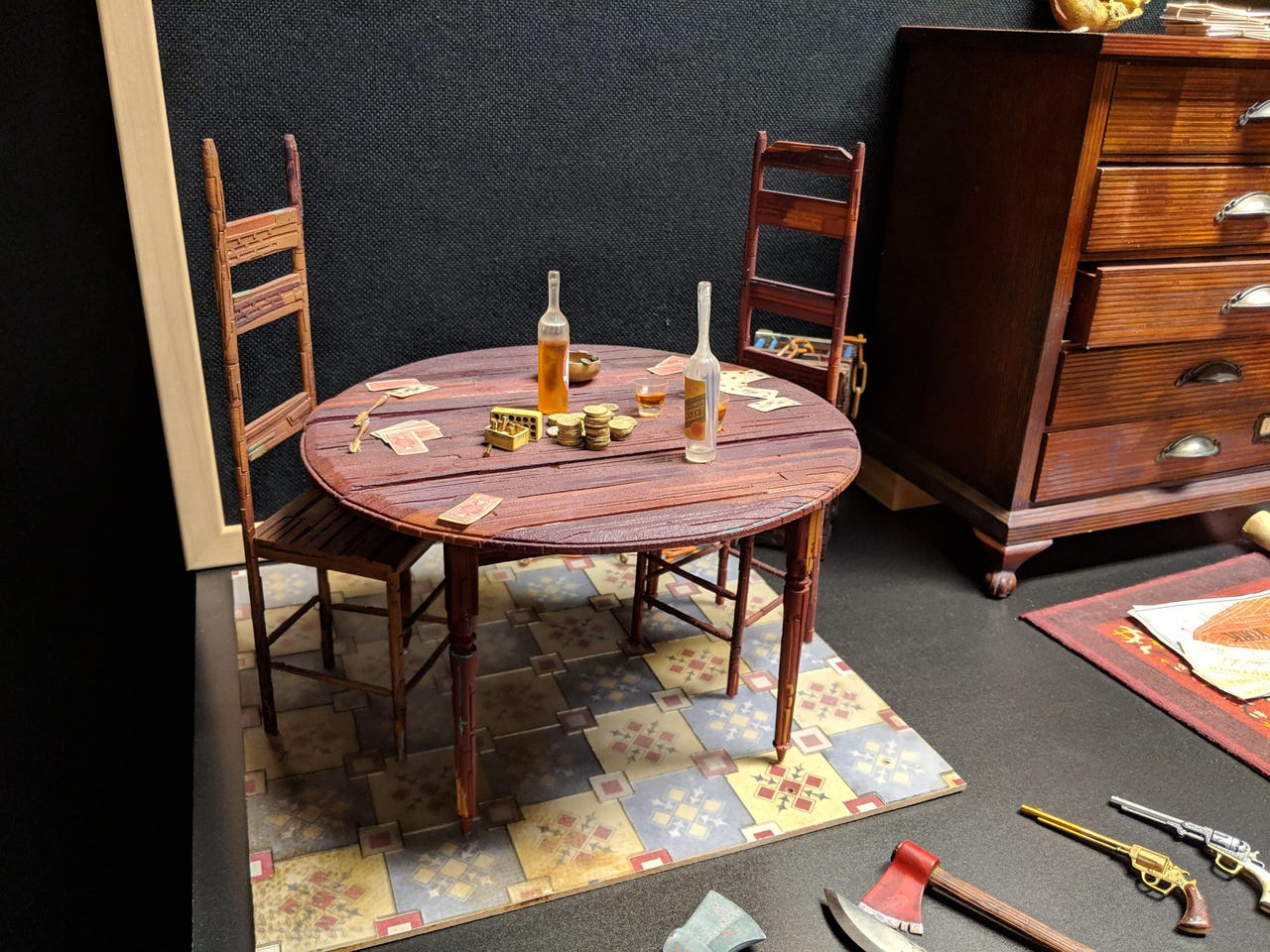Behind the scenes: How Laika creates high-tech, stop-motion animation

Stop-motion animation, infused with cutting-edge technology
The art of stop-motion animation is more than a century old. It involves taking still images of a puppet or figure and slightly manipulating the figure in between frames to create a sense of motion. Laika, the animation studio near Portland, Oregon, has infused this art form with cutting edge technology like 3D printing and digital effects to create visually captivating movies like Coraline, Kubo and the Two Strings and the upcoming film, Missing Link.
ZDNet took a behind-the-scenes look at the production of Missing Link, scheduled for release in April, to see how Laika artists are using 3D printing and digital effects while staying true to the art of stop-motion animation.
Hand-crafted puppets
The puppets of Missing Link were created by about 86 fabrication artists with a range of skills -- they included jewelers, engineers, textile experts and "art school rejects who reinforce the personality of the department," joked Laika Creative Lead John Craney.
The Missing Link
Link, the eponymous hero of the film, is a particularly sophisticated puppet. Link's silicone skin comprises more than 1,000 pieces of "fur," all laid by hand. Underneath the silicone, Link and the other puppets are made of metal armature, which comprises hundreds of components like screws and hinges. Link's armature includes unique components like a "breather," which makes his chest move in and out. Some components, like Link's chest piece, are made from a kind of resin used to build climbing walls that's particularly strong.
3D printing puppet faces
Starting with Coraline -- Laika's first feature-length film, released in 2009 -- Laika used 3D printing to produce the faces for its puppets. The first 3D printer Laika used was the Objet Eden 260, a single-material resin 3D printer from Stratasys (shown here). In 2012 for the movie ParaNorman, Laika turned to 3D Systems for the only 3D printer on the market capable of printing in multiple colors. However, in exchange for the ability to print in color, Laika sacrificed the accuracy and repeatability of the Stratasys machine, according to Laika Director of Rapid Prototyping Brian Mclean.
Creating the faces of Missing Link with the Stratasys J750
In 2013, Laika adopted the Stratasys Connex3, followed by the Stratasys J750 in 2015. The J750 allows Laika to print as many as seven colors at once. Laika paired the machine with Fraunhofer's software Cuttlefish to create the faces of Missing Link.
106,000 different faces
In Missing Link, all of the faces on the puppets are replaceable. In fact, Laika printed a total of 106,000 different faces for the movie. By comparison, the studio printed 20,000 faces to produce Coraline. In a movie like Missing Link, the animators may need to replace the face upwards of 24 times for just one second of footage.
Printing many faces at once
For a character like Missing Link's Adelina, it can take about 1.5 hours to print a new face, Mclean said. However, it takes just about the same amount of time to print a whole row of new faces with the J750. Complexity doesn't add to the time it takes to print objects, Mclean said -- the only factor that adds time to the printing process is the height of the object.
Face registration
All of the facial expressions are pre-determined before the movie is shot. To make sure the faces are used in the right order, Laika uses a registration system. On the back of each face, the animator looks for a specific code that tells them in exactly which frame the face should be used.
Creating subtle eye movement
Laika also uses 3D printing to create an "eye rig" -- a mechanism that allows the animator to subtly move the puppet's eyeball and eyelid with an X-Acto knife. The puppets are "like fancy Mr. Potato Heads, in a way," Mclean said.
Shooting stop-motion animation
The footage is shot with a Canon 5D Mark III. Every frame is shot twice -- once with the left eye and once with the right eye -- to produce the movie in both 2D and 3D.
Creating fluid motion with rigs
While animators move the characters by hand, more fluid motions are created with the help of rigs, designed at Laika with Autodesk Inventor. Once the Laika team has captured images of the character on set, they'll digitally overlay a "clean slate" -- images of the set without the characters or rigs -- to mask the rigging. Laika's digital effects team uses applications like Nuke to remove the rigs.

Hand-crafted details
The Laika sets are extremely detailed -- and the vast majority of it all is handmade, according to Production Designer Nelson Lowry.
Modular sets
Laika's production teams build sets on tables that can be moved around, so the animators can move the characters around more easily. After the images are captured, some of the background is added to the film digitally. The visual effects team works closely with the art department and other teams to ensure the digital aspects of the film are respectful of the stop-motion animation process.